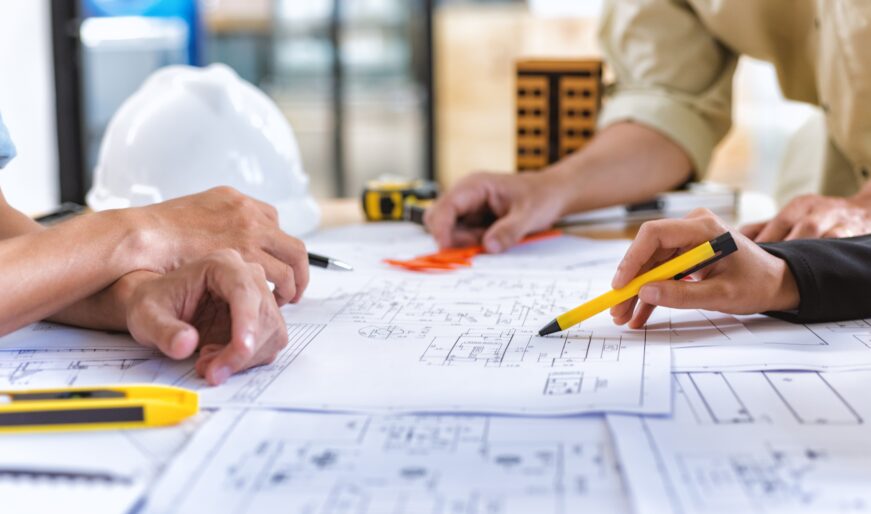As buildings become taller and more complicated, the engagement of trades in the design-assist process is more integral than ever. The design-assist project delivery method allows the construction partners and the design team to collaborate early and often throughout the project duration, bringing more cohesion and cooperation to a process that might otherwise operate in silos.
“Design-assist entails regular engagement and collaboration with the trade partners and the design team,” explains Cait Mancuso, Project Engineer with RJC Engineers. “Instead of the designers producing a detail in isolation, design-assist ensures everyone works together to come up with a solution that meets the engineering intent, while also considering the needs and constraints of the trades in terms of constructability, cost and schedule.”
In any field, having a culture of collaboration is known to help improve efficiencies and avoid costly mistakes. But in the complicated world of construction, where intricate machinery, occupant safety, building aesthetics and sustainability are just some of the pressing considerations, catching problems early is critical to the success of a project. For design-assist to be truly effective, Mancuso explains that there must be a willingness by all parties to work together.
“There will be curveballs and hiccups—and if you don’t have that collaborative culture in place, obstacles will slow down and mar the process,” she says. “Having the trades at the table early to provide input allows for optimization and more seamless construction. Meanwhile, ongoing engagement helps with problem-solving throughout the project, as new challenges arise.”
Of course, the more complicated the project, the more important it is to have qualified design-assist trades on board. Gone are the days when the architects and engineers were the only ones working in 3D BIM models; trades today are also creating sophisticated 3D models for clash detection and coordination that the whole design assist team can leverage.
Recently, Mancuso worked on a project in downtown Toronto that included complex steel nodes at the top of the tower, and the technology used by all parties involved proved to be integral.
“While one team was detailing the connections down to the nuts and bolts, another was developing 3D models of the rebar and couplers so we could identify any conflicts before these robust connections arrived at the site,” she says. “This allowed us to troubleshoot in advance to avoid delays.”

No matter the project, troubleshooting in advance and avoiding delays are always part of the goal. Here, Mancuso shares four tips for achieving success through design-assist:
- Engage Early – “Bringing trades, such as the steel fabricator, to the table early to discuss their constraints and pain points will help limit future issues. Be sure to have early discussions about procurement, material availability, and bespoken sections, especially in a volatile steel market.”
- Discuss Typical Details – “Design-assist isn’t just for the big, complex problems. There is opportunity for value engineering and tonnage/cost savings by having trade input on the typical details that are repeated hundreds of times on tall steel projects.”
- Don’t Make Assumptions Based on Models Alone – “Sometimes the assumptions made in design models don’t translate perfectly to reality. Have discussions with your steel fabricator about your connection fixity assumptions and understand that some of the idealistic boundary conditions considered in design may not be easily achieved on site. Sometimes we can have a connection that is representative of our analysis, such as a true pin detail, but other times we may need to change our boundary assumptions to match what can be constructed, like an axial connection that becomes ‘fixed’ because of fabrication.”
- Collaborate – “Ultimately, it is important to have a culture of collaboration for design assist to work. When all parties are brought on early and at the table for value engineering discussions, successful outcomes are more likely. With everyone working together there are more opportunities for optimization in design and construction. Ensuring trades understand the design intent and know how their piece of the puzzle fits in with the other trades working around them, leads to fewer issues in the field.”
For more information, please visit www.rjc.ca or contact Cait Mancuso directly at CMancuso@rjc.ca








